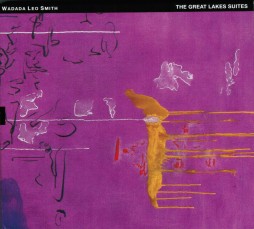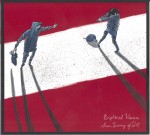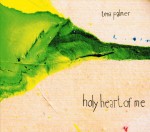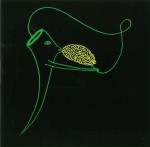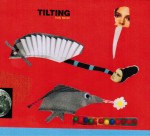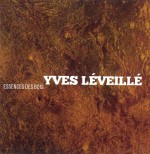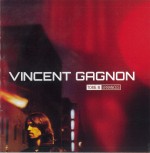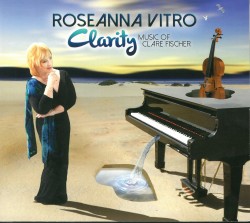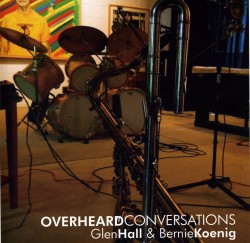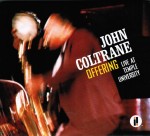Creating an entire program of integrated story and sound has long been a hallmark of western music. Just because the 20th and 21st centuries have given composers not only more instruments and modes to work with but also the possibility of adding aleatoric passages hasn`t lessened such projects’ appeal. Unlike the sometimes ill-conceived so-called jazz musicals of the past, today’s improvisers have the skills needed to link a coherent story line with creative sounds.
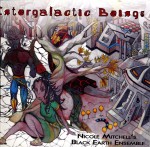 Science fiction in its many forms fascinates many of these composers and the appeal of Intergalactic Beings (FPE Records FPE 02 fperecs.com) is how composer/flutist Nicole Mitchell leads her ten-member ensemble in interpreting a theme that’s far from common. Mitchell’s nine-part suite uses vocal and instrumental emphasis to interpret the Xenogenesis trilogy of books by Octavia Butler (1947-2006), whose post-feminist Afro-futurism deals with racial and sexual ambiguity. Briefly Intergalactic Beings posits a post-apocalyptic world where the few remaining humans must mate with tentacle-grasping aliens with superior genes in order for humanity to survive. This obviously isn’t Hello Dolly or Chicago. Throughout the alternating lyrical soprano and guttural alto shadings of Mankwe Ndosi’s voice express the nuances of the tale, with tracks like “Cycle of Metamorphosis” including such phrases as “transformation to save the nation” to propel the storyline. As Ndosi’s verbal exposition moves through pseudo-orgasmic cries, renal murmurs and finally triumphant cosmic-like hallelujahs, the score is advanced by timbral dislocation. Chamber-like concentration, mostly from violin, cello and double bass, mates with tougher interjections from Jeff Parker’s flanging guitar twangs, crying triple-tongued melisma from David Boykin’s reeds, plus the composer’s tongue-fluttering, sometimes doubled by Renée Baker’s violin strokes. As concentrated multiphonics from the strings, horns and dual percussionists intersect in lumbering, gentling or staccato sequences intermingling sexuality is alluded to and resolved. The verbalized “hope is a memory” serves as a leitmotif for the adjoining Web of Hope/Fields of Possibility as marimba pops, trumpet bites and concentrated string sweeps presage the resolution. By the final The Inevitable, combative dissonance is put aside for a contrapuntal near-waltz from strings and vocalist. Fortissimo flute patterns backed by magisterial drum clunks and muted triplets from trumpeter David Young confirm the humanness remaining in the newly born third gender. A descriptive coda recaps the initial fragile human theme, with jagged note patterns toughening it to suggest the existence of a new identity – and corpus.
Science fiction in its many forms fascinates many of these composers and the appeal of Intergalactic Beings (FPE Records FPE 02 fperecs.com) is how composer/flutist Nicole Mitchell leads her ten-member ensemble in interpreting a theme that’s far from common. Mitchell’s nine-part suite uses vocal and instrumental emphasis to interpret the Xenogenesis trilogy of books by Octavia Butler (1947-2006), whose post-feminist Afro-futurism deals with racial and sexual ambiguity. Briefly Intergalactic Beings posits a post-apocalyptic world where the few remaining humans must mate with tentacle-grasping aliens with superior genes in order for humanity to survive. This obviously isn’t Hello Dolly or Chicago. Throughout the alternating lyrical soprano and guttural alto shadings of Mankwe Ndosi’s voice express the nuances of the tale, with tracks like “Cycle of Metamorphosis” including such phrases as “transformation to save the nation” to propel the storyline. As Ndosi’s verbal exposition moves through pseudo-orgasmic cries, renal murmurs and finally triumphant cosmic-like hallelujahs, the score is advanced by timbral dislocation. Chamber-like concentration, mostly from violin, cello and double bass, mates with tougher interjections from Jeff Parker’s flanging guitar twangs, crying triple-tongued melisma from David Boykin’s reeds, plus the composer’s tongue-fluttering, sometimes doubled by Renée Baker’s violin strokes. As concentrated multiphonics from the strings, horns and dual percussionists intersect in lumbering, gentling or staccato sequences intermingling sexuality is alluded to and resolved. The verbalized “hope is a memory” serves as a leitmotif for the adjoining Web of Hope/Fields of Possibility as marimba pops, trumpet bites and concentrated string sweeps presage the resolution. By the final The Inevitable, combative dissonance is put aside for a contrapuntal near-waltz from strings and vocalist. Fortissimo flute patterns backed by magisterial drum clunks and muted triplets from trumpeter David Young confirm the humanness remaining in the newly born third gender. A descriptive coda recaps the initial fragile human theme, with jagged note patterns toughening it to suggest the existence of a new identity – and corpus.
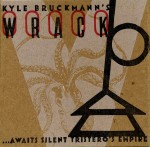 American literature with fantastical implants is the theme of Awaits Silent Tristero’s Empire (Singlespeed Music SSM-014 singlespeedmusic.com) by oboist/English horn player Kyle Bruckmann’s seven-piece avant chamber ensemble Wrack. The four-part composition suggests moods engendered by Thomas Pynchon’s best-known novels. Thematic, but not literal, the sometimes dour Pynchon would probably be surprised to hear how much buoyant humour Bruckmann has injected into his interpretations. “Gravity’s Rainbow” for instance moves from discordant vibrations pumped out by scrubbing strings and siren-like brass until a rim shot from drummer Tim Daisy pushes the theme into cabaret territory. From then on the piece bounces from broken triplet tones propelled by trumpeter Darren Johnston, a Burlington, Ontario native, backed by string hammering from bassist Anton Hatwich; to slurping tonguing from Bruckmann and bass clarinetist Jason Stein; through a folk-like stretch from violist Jen Clare Paulson, finally dissolving into barnyard-like cacophony with moos and caws mixed among instrumental tones. Retreating from tailgate slurs from trombonist Jeb Bishop, the final sequence suggests what would happen if a string duo was lost on the vast prairies. Wrack manages to add a contrapuntal tango beat from huffing horns and stolid double bass into “The Crying of Lot 49,” preceding Daisy’s scene-setting drumming with the same finesse exhibited in bass drum thumps, snare paradiddles and cymbal clanks. But it’s V, Pynchon’s best-known book which gets extensive treatment. Complex enough to zigzag through many themes and counter themes, the music reflects the book’s time-dislocated thesis. Highlights include, on the somber side, Bishop’s dark and dirty blues sequence that is accompanied by slap bass and two-beat drumming; and for a lively change of pace, Stein’s hyper-macho descending split tones that are eventually moderated by airy flutter tonguing from English horn and trumpet. In complete contrast is a midsection line that starts off Jazz Age processional yet ends up with freilicher-like joyousness propelled by parallel counterpoint from viola and oboe. The exaggerated swing that pops out here and there throughout the tracks, like raisins in cereal, is eventually regularized into a salutary conclusion.
American literature with fantastical implants is the theme of Awaits Silent Tristero’s Empire (Singlespeed Music SSM-014 singlespeedmusic.com) by oboist/English horn player Kyle Bruckmann’s seven-piece avant chamber ensemble Wrack. The four-part composition suggests moods engendered by Thomas Pynchon’s best-known novels. Thematic, but not literal, the sometimes dour Pynchon would probably be surprised to hear how much buoyant humour Bruckmann has injected into his interpretations. “Gravity’s Rainbow” for instance moves from discordant vibrations pumped out by scrubbing strings and siren-like brass until a rim shot from drummer Tim Daisy pushes the theme into cabaret territory. From then on the piece bounces from broken triplet tones propelled by trumpeter Darren Johnston, a Burlington, Ontario native, backed by string hammering from bassist Anton Hatwich; to slurping tonguing from Bruckmann and bass clarinetist Jason Stein; through a folk-like stretch from violist Jen Clare Paulson, finally dissolving into barnyard-like cacophony with moos and caws mixed among instrumental tones. Retreating from tailgate slurs from trombonist Jeb Bishop, the final sequence suggests what would happen if a string duo was lost on the vast prairies. Wrack manages to add a contrapuntal tango beat from huffing horns and stolid double bass into “The Crying of Lot 49,” preceding Daisy’s scene-setting drumming with the same finesse exhibited in bass drum thumps, snare paradiddles and cymbal clanks. But it’s V, Pynchon’s best-known book which gets extensive treatment. Complex enough to zigzag through many themes and counter themes, the music reflects the book’s time-dislocated thesis. Highlights include, on the somber side, Bishop’s dark and dirty blues sequence that is accompanied by slap bass and two-beat drumming; and for a lively change of pace, Stein’s hyper-macho descending split tones that are eventually moderated by airy flutter tonguing from English horn and trumpet. In complete contrast is a midsection line that starts off Jazz Age processional yet ends up with freilicher-like joyousness propelled by parallel counterpoint from viola and oboe. The exaggerated swing that pops out here and there throughout the tracks, like raisins in cereal, is eventually regularized into a salutary conclusion.
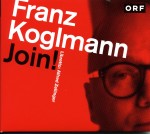 With instant communication having moved from the stuff of sci-fi to everyday, Viennese flugelhornist Franz Koglmann’s satiric opera about marketing communications and big business is as topical as it is musically thrilling. With a libretto by Alfred Zellinger in English and German, Join! (ORF-CD 3177 shop.orf.at/1/shop.tmpl?art=6348&lang=DE), features a 19-piece orchestra and eight major singing roles. Throughout, the score, a cunning pastiche of Broadway musical conventions, burlesque rock’n’roll and pseudo-classical tropes plus jazz, is used to comment upon the action. The gloomy inverse of How to Succeed in Business, Join! follows the corporate machinations of company managers who want to transform society with its new product – an implanted microchip which allows the recipient to be universally connected. Sound familiar? Throughout, obbligatos including jeering trumpet smears and violin plucks underline and mock the characters’ self-satisfied arrogance. Listen to the pseudo-bluesy piano interlude that accompanies the marketing director’s plaint “Ich bin perfect;” or a string-strong operatic underpinning of a soprano’s hymn to “corporate responsibility, fair trade” and “the end of privacy.” At mid-point, swelling orchestral motifs reach a crescendo as the company sings: “Communication is our product/everytime, everywhere/wireless directly/from brain to brain/future is our business/a better life our promise.” Following a demonstration of the product by the soprano singing in a sexy German-accented purr: “My profile is updated/my inbox frequented…I have the chip and you can have it too/so join with me the New Society,” a rousing celebration of so-called intelligent design echoes from the company. Underlining the globalization of this totalitarian technology-commerce mix, Koglmann’s soundtrack includes fake Tijuana Brass mariachi styling played by garish trumpet and wheezy English horn, backing the model and product manager; plus when the chorus urges adherence to “the new society” while harmonizing in the manner of 1950s pop groups, the hand-clapping accompaniment includes Jerry Lee Lewis-styled piano slides and some rockabilly double bass slaps. Finally, following clashes with social activists and an insider trading scandal, given greater impact by harsh guitar flanges and dissonant horn breaks, those pressing for robotic transformation are put in their place. But with a dreamy cha-cha encompassing the composer’s flugelhorn obbligato leading to a tender duet between the C.E.O.-baritone and the microchip-implanted soprano, has the idea been thwarted or just delayed?
With instant communication having moved from the stuff of sci-fi to everyday, Viennese flugelhornist Franz Koglmann’s satiric opera about marketing communications and big business is as topical as it is musically thrilling. With a libretto by Alfred Zellinger in English and German, Join! (ORF-CD 3177 shop.orf.at/1/shop.tmpl?art=6348&lang=DE), features a 19-piece orchestra and eight major singing roles. Throughout, the score, a cunning pastiche of Broadway musical conventions, burlesque rock’n’roll and pseudo-classical tropes plus jazz, is used to comment upon the action. The gloomy inverse of How to Succeed in Business, Join! follows the corporate machinations of company managers who want to transform society with its new product – an implanted microchip which allows the recipient to be universally connected. Sound familiar? Throughout, obbligatos including jeering trumpet smears and violin plucks underline and mock the characters’ self-satisfied arrogance. Listen to the pseudo-bluesy piano interlude that accompanies the marketing director’s plaint “Ich bin perfect;” or a string-strong operatic underpinning of a soprano’s hymn to “corporate responsibility, fair trade” and “the end of privacy.” At mid-point, swelling orchestral motifs reach a crescendo as the company sings: “Communication is our product/everytime, everywhere/wireless directly/from brain to brain/future is our business/a better life our promise.” Following a demonstration of the product by the soprano singing in a sexy German-accented purr: “My profile is updated/my inbox frequented…I have the chip and you can have it too/so join with me the New Society,” a rousing celebration of so-called intelligent design echoes from the company. Underlining the globalization of this totalitarian technology-commerce mix, Koglmann’s soundtrack includes fake Tijuana Brass mariachi styling played by garish trumpet and wheezy English horn, backing the model and product manager; plus when the chorus urges adherence to “the new society” while harmonizing in the manner of 1950s pop groups, the hand-clapping accompaniment includes Jerry Lee Lewis-styled piano slides and some rockabilly double bass slaps. Finally, following clashes with social activists and an insider trading scandal, given greater impact by harsh guitar flanges and dissonant horn breaks, those pressing for robotic transformation are put in their place. But with a dreamy cha-cha encompassing the composer’s flugelhorn obbligato leading to a tender duet between the C.E.O.-baritone and the microchip-implanted soprano, has the idea been thwarted or just delayed?
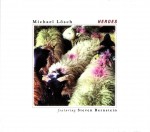 Ignoring literary and futuristic input, Italian composer Michael Lösch goes in the other direction with Heroes (Sweet Alps Productions michaelloesch.com). Commissioned by an Italian jazz festival, pianist/organist Lösch wrote a seven-part suite commemorating the Tyrolean Rebellion of 1809. Using a pocket orchestra of eight, prominently featuring American trumpeter Steven Bernstein, the suite is joyously post-modern and more jokey than jingoist. Most of the titles use a variant of the first name of Andreas Hofer (1767-1810), who led the rebellion against the French and Bavarian occupation. Following a few victories he surrendered, fled, was captured and summarily executed. A Louis Riel-like figure, over the years Hofer has become revered as folk hero and patriot. With the program only reflected in the titles, Lösch’s pieces stand on their own, with many – especially the punning introduction “Ander Title” and the equivalent conclusion “Ander Water” – expressing a mixture of Italian folk dances, Austrian oom-pah and heroic pseudo-marches featuring organ accents that could come from 1960s private eye TV shows. At the same time because it’s a contemporary suite, sophisticated references to other situations are added via performance visuals (seen in the booklet) plus snatches of speeches, poems, gunfire and voices on a couple of tracks. Alto saxophonist Florian Bramböck’s sharp edges suggest the rebellion’s triumphant moments and baritone saxophonist Helga Plankensteiner’s deep lowing the more melancholy ones. No matter how cacophonous the style mixing and pacing becomes, pushed at its speediest by the ringing flanges and pulsating electronics from guitarist Enrico Merlin, forward motion is never lost. Beside the composer’s sympathetic piano comping or organ smears, Bernstein leaps like a mountain goat over the contrapuntal program using warm flutter tonguing or muted grace notes to herd stray sounds and keep things exciting.
Ignoring literary and futuristic input, Italian composer Michael Lösch goes in the other direction with Heroes (Sweet Alps Productions michaelloesch.com). Commissioned by an Italian jazz festival, pianist/organist Lösch wrote a seven-part suite commemorating the Tyrolean Rebellion of 1809. Using a pocket orchestra of eight, prominently featuring American trumpeter Steven Bernstein, the suite is joyously post-modern and more jokey than jingoist. Most of the titles use a variant of the first name of Andreas Hofer (1767-1810), who led the rebellion against the French and Bavarian occupation. Following a few victories he surrendered, fled, was captured and summarily executed. A Louis Riel-like figure, over the years Hofer has become revered as folk hero and patriot. With the program only reflected in the titles, Lösch’s pieces stand on their own, with many – especially the punning introduction “Ander Title” and the equivalent conclusion “Ander Water” – expressing a mixture of Italian folk dances, Austrian oom-pah and heroic pseudo-marches featuring organ accents that could come from 1960s private eye TV shows. At the same time because it’s a contemporary suite, sophisticated references to other situations are added via performance visuals (seen in the booklet) plus snatches of speeches, poems, gunfire and voices on a couple of tracks. Alto saxophonist Florian Bramböck’s sharp edges suggest the rebellion’s triumphant moments and baritone saxophonist Helga Plankensteiner’s deep lowing the more melancholy ones. No matter how cacophonous the style mixing and pacing becomes, pushed at its speediest by the ringing flanges and pulsating electronics from guitarist Enrico Merlin, forward motion is never lost. Beside the composer’s sympathetic piano comping or organ smears, Bernstein leaps like a mountain goat over the contrapuntal program using warm flutter tonguing or muted grace notes to herd stray sounds and keep things exciting.
Whether they’re celebrating the past or exploring the future, thematic compositions continue to be a part of jazz-identified music. Followers of the genre that mixes a story with well-played music would be advised to look beyond traditional sources to investigate unanticipated gems like the sessions here.
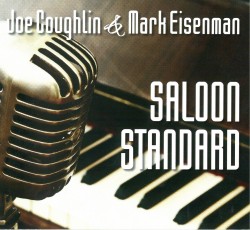 Saloon Standard
Saloon Standard

